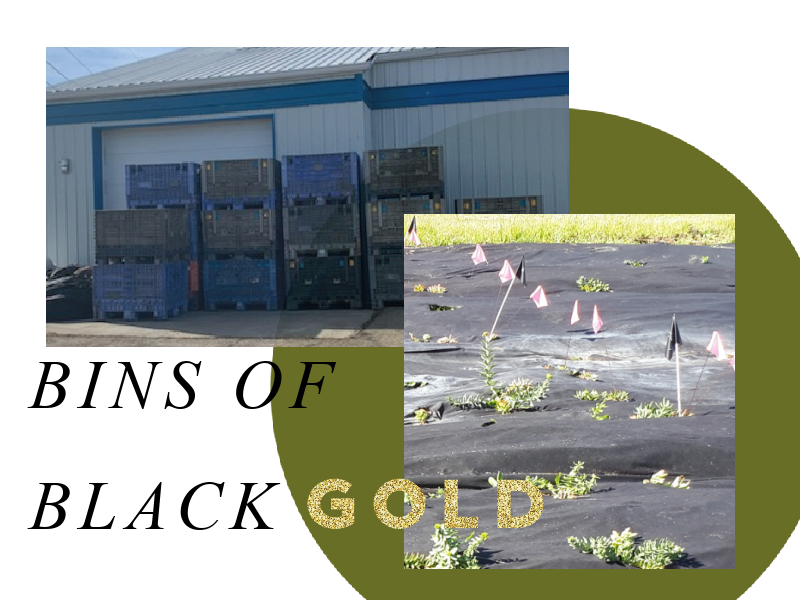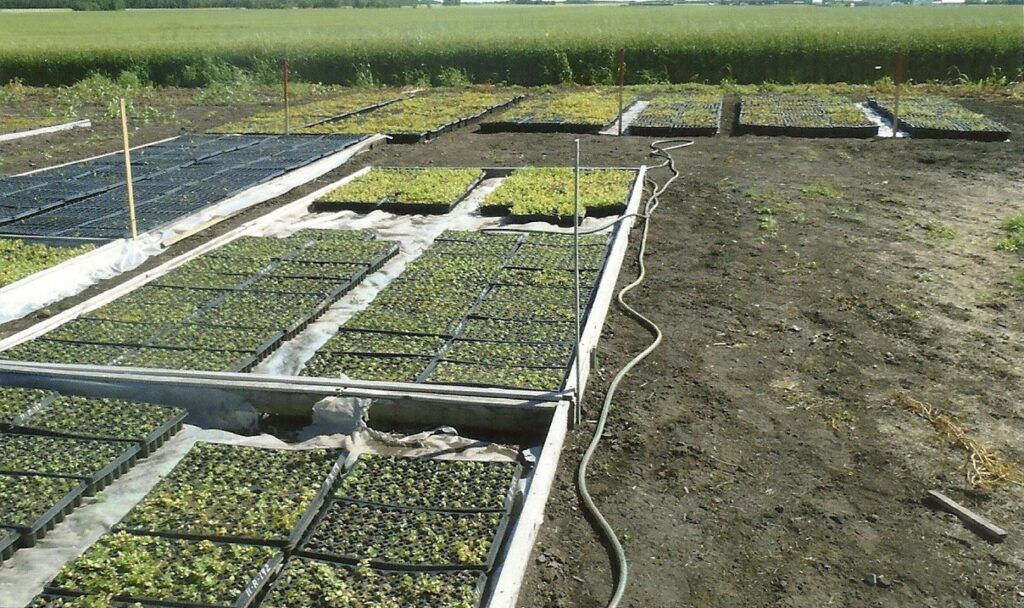How do you . . .
Plant Rhodiola rosea?

The seedlings are ready. They’ve grown in their cells for a year or more. Their roots are well established, crowns are developing, and they are filling up all the room they have in the nursery.
Is it time to plant them out into the field? While the seedlings grow, the farmer must prepare the land to receive the seedlings. In Alberta (Canada), the weed pressure is high to extreme, and Rhodiola rosea will not compete well with weeds. Yield loss due to weeds can be as high as 95%. That means lots of tilling and/or herbicides. The crop bed must be weed-free to give the Rhodiola seedlings a head start.
Now are we ready to plant? Maybe. Check the weather. Is there a rain in the forecast? Yes! Let’s go!
Time to lay the plastic and make raised beds. Then pop the seedlings out of their trays in the nursery and hook up the transplanter. Now fill up the water tanks and start planting. The transplanter pokes a hole in the plastic and fills the hole with water. Stop and go as all holes receive a healthy plant. The end result – rows of Rhodiola and many promises to keep the field well tended and the weeds at bay.
There are many ways to plant from highly specialized GPS-driven automatic planters to shovels and forks. Either time and lots of money, or vice versa. Each farmers’ story is different and each farmer makes many decisions for his Rhodiola. And that’s just the start. Next step – weed and weed some more – for five years.















 ARRGO has been observing changes in rosavins levels which may correlate to temperature and dormancy conditions in Rhodiola root. It may be possible to use this information to simulate conditions which will affect the rosavins levels in harvested crop.
ARRGO has been observing changes in rosavins levels which may correlate to temperature and dormancy conditions in Rhodiola root. It may be possible to use this information to simulate conditions which will affect the rosavins levels in harvested crop.
 Stephen Daniells, Editor-in-Chief at Nutraingredients-USA writes about the need to increase the cultivation of Rhodiola rosea and raises concerns over increased demands which threaten wild populations. His
Stephen Daniells, Editor-in-Chief at Nutraingredients-USA writes about the need to increase the cultivation of Rhodiola rosea and raises concerns over increased demands which threaten wild populations. His